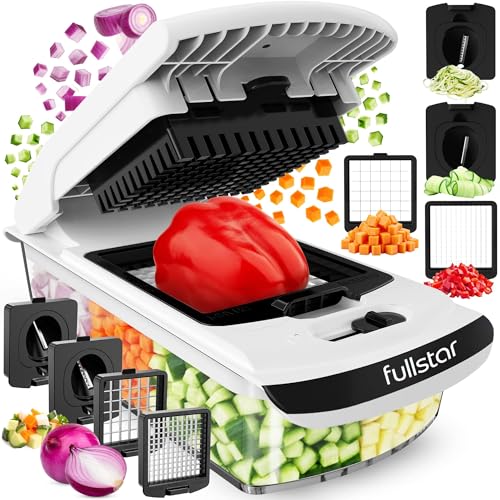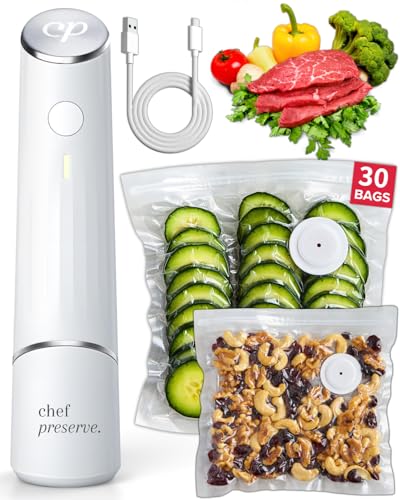Traditional Easter Celebration Roots
As spring emerges and the earth awakens, many cultures celebrate Easter, deeply rooted in centuries of tradition. The Easter origins trace back to ancient spring festivals that honored renewal and rebirth, merging with Christian commemorations of the resurrection of Jesus Christ.
This confluence of rituals highlights Easter’s cultural significance across diverse societies. Customs like egg decorating and sunrise services reflect a profound connection to nature and spirituality, symbolizing fertility and hope.
As communities gather during this festive season, they embrace both ancient practices and modern interpretations, creating a rich tapestry of observances. The egg, now a universal emblem of Easter, encapsulates the essence of new beginnings, echoing the timeless themes of life and resurrection that resonate throughout history.
- The Original Pro Chopper - Our superstar veggie slicer has been creating waves on TikTok! Simple to use,...
- Easy Meal Prep with Rust-Resistant Blades - Our vegetable chopper is perfect for anyone who wants to eat...
- 5-Star Design - The soft-grip TPU handle ensures controlled chopping, while the non-skid rubber base...
Family Gatherings and Celebrations
Family gatherings during Easter embody a vibrant blend of warmth, tradition, and joy, uniting loved ones around tables adorned with festive foods.
As families come together, cherished family traditions are passed down through generations, creating a sense of belonging and continuity.
Each gathering features an array of holiday recipes, with the roasted Easter ham often taking center stage, its sweet honey glaze captivating all.
These culinary delights not only nourish the body but also enrich the spirit, as laughter and stories fill the air.
The significance of shared meals emphasizes the importance of connection, as families celebrate not just the feast itself but also the bonds that tie them together.
In this way, Easter gatherings become memorable experiences steeped in love and heritage.
- Makes Everything Simple : Just forget your bagged cheese! Only turn the handle for several times and get...
- Premium Material : All parts of the rotary cheese grater are made of food grade ABS material, no BPA. The...
- Three Option Grater : The parmesan cheese grater finishes food preparation with slicing, shredding and...
Essential Ingredients

The cornerstone of a delicious Easter ham lies in its essential ingredients, each chosen for its ability to enhance flavor and create a memorable dish.
Central to this recipe is high-quality ham, preferably bone-in for added richness. The star ingredient, honey, brings sweetness, offering numerous honey benefits such as natural antioxidants and a delightful glaze that caramelizes during cooking.
A blend of spices like cloves, cinnamon, and black pepper adds depth, while Dijon mustard introduces a tangy contrast, balancing the sweetness.
Glaze variations can include maple syrup or brown sugar for different flavor profiles, catering to diverse palates. Together, these components create a harmonious union that transforms a simple ham into a standout centerpiece for any Easter celebration.
- 💰 REDUCE WASTE AND SAVE MONEY: Chef Preserve keeps FOOD FRESH 5 TIMES LONGER than non-vacuum storage...
- ✅ POWERFUL, QUICK & EASY TO USE: Simply press the button to start. The device vacuum seals a bag in 5...
- ♻️ REUSABLE & RESEALABLE BAGS: Chef Preserve comes with dishwasher, freezer, refrigerator, and...
Cooking Steps
Begin by preheating the oven to a precise temperature, typically around 325°F (163°C), ensuring an ideal environment for the ham to cook evenly.
Next, score the surface of the ham in a diamond pattern to enhance the flavor and allow the glaze to penetrate.
For the glaze, a honey-based mixture works beautifully, but chefs can explore alternatives like maple syrup or brown sugar for unique flavor profiles.
Apply the glaze generously and consider using cooking techniques such as basting every 20 to 30 minutes to achieve that coveted caramelized finish.
As the ham roasts, its tantalizing aroma will fill the kitchen, signaling a delightful meal ahead.
After the specified cooking time, allow it to rest before slicing.
- Generous Capacity: 7-quart slow cooker that comfortably serves 9+ people or fits a 7-pound roast
- Cooking Flexibility: High or low slow cooking settings, with convenient warm function for ideal serving...
- Convenient: Set it and forget it feature enables you to cook while at work or performing daily tasks
1. Preheat Oven to 325°F

Achieving the perfect bake starts with a properly preheated oven, set to a consistent 325°F (163°C).
This oven temperature is ideal for a wide array of baking methods, allowing heat to circulate evenly around the ham. A well-preheated oven ensures that the exterior of the ham caramelizes beautifully while maintaining moisture in the interior. The gentle heat encourages even cooking, preventing burnt spots or undercooked areas.
Before placing the ham inside, it’s important to give the oven a few minutes to reach the desired temperature. Utilizing an oven thermometer can help verify accuracy.
A stable temperature not only optimizes flavor but also ensures the honey glaze develops that irresistible, glossy finish—making the ham a central masterpiece of any Easter gathering.
- 100% Leak-proof: Guaranteed no-spill seal and secure latches
- Crystal-clear Tritan Built: Stain-resistant and odor-resistant material for a clear view of contents
- Lightweight & Sturdy: Easy to carry, yet durable for everyday use
2. Score the Ham’s Surface

Before applying the glaze, scoring the ham’s surface not only enhances its appearance but also aids in flavor absorption. This technique involves making shallow cuts in a diamond pattern across the surface of the meat, allowing marinades and glazes to penetrate more effectively.
Various scoring techniques exist, such as crisscross or parallel cuts, each designed to maximize the surface area exposed to the flavorful glaze. The carved lines create an elegant design while promoting better caramelization, resulting in a delightful contrast between the savory and sweet elements.
As the ham cooks, the scored sections become caramelized, intensifying the surface flavor and presenting a visually captivating dish for any Easter celebration. Properly scored, the ham ensures delightful taste and appealing aesthetics.
- 𝗘𝗳𝗳𝗼𝗿𝘁𝗹𝗲𝘀𝘀 𝗪𝗲𝗶𝗴𝗵𝗶𝗻𝗴: Supports 5 units...
- 𝗣𝗿𝗲𝗰𝗶𝘀𝗲 𝗥𝗲𝘀𝘂𝗹𝘁𝘀: Accurately weighs up to 11 lb/5 kg with 1 g...
- 𝗦𝗶𝗺𝗽𝗹𝗲 & 𝗖𝗼𝗺𝗽𝗮𝗰𝘁: The small and sleek scale is a perfect fit for...
3. Apply Honey Glaze Generously

With a generous hand, the cook applies the honey glaze to the scored surface of the ham, ensuring that every crevice and curve is beautifully coated.
Using effective glazing techniques, the cook takes care to avoid excess pooling, allowing the glaze to adhere properly and enhance the flavor. As the honey seeps into the ham, it not only adds a rich sweetness but also provides numerous honey health benefits, such as antioxidants and antimicrobial properties.
The careful application creates a stunning caramelized crust that will develop during baking. Each brushstroke is intentional, maximizing flavor infusion and ensuring a moist, succulent bite that elevates the Easter feast, making it a memorable centerpiece for family gatherings.
- Instant Read Food Thermometer | Our instant read thermometer features a temperature probe and advanced,...
- Multi-Use | From bbq thermometer to baking thermometer, our digital food thermometer for cooking is...
- Easy-Read Digital Thermometer For Cooking | Large instant thermometer dial with bright blue backlight...
4. Bake for 2-2.5 Hours

Once the glaze has been expertly applied, the ham is placed in the oven to bake for a duration of 2 to 2.5 hours.
During this time, the gentle heat allows the honey glaze to caramelize, creating a rich, golden crust that enhances the ham’s natural flavors.
The cooking techniques employed during this period are critical; slow baking helps maintain moisture and tenderness throughout the meat.
This long, steady baking time ensures that the ham reaches a safe internal temperature while developing a mouthwatering aroma that fills the kitchen.
Every minute counts, as the balance of heat and time transforms the ham into an irresistible centerpiece, ready to impress during any Easter celebration.
- Versatile 54-Piece Collection: Elevate your kitchen with the Home Hero 54-Piece Kitchen Utensil Set, a...
- Durable and Long-Lasting: Crafted from premium stainless steel, these kitchen utensils are designed to...
- Perfect Holiday Gift: Delight your loved ones with this kitchen utensils gift set this festive season....
5. Baste With Juices Every 30 Minutes

Every 30 minutes, the ham calls for a careful basting with its own flavorful juices. This vital process not only preserves moisture but also intensifies the taste through effective basting techniques.
Each application of warm, rich juices contributes to a beautifully glazed exterior, creating an inviting caramelization. Using a basting brush or ladle, generous amounts of the collected juices are applied, allowing the honey glaze to meld with the savory undertones of the ham.
As the basting continues, the flavors deepen and develop, offering a delightful contrast to the sweetness. This consistent attention ensures that the final product emerges as a succulent centerpiece, embodying both tenderness and flavor enhancement that will be the highlight of any Easter celebration.
- 24-ounce insulated stainless-steel water bottle with a FreeSip spout and push-button lid with lock
- Patented FreeSip spout designed for either sipping upright through the built-in straw or tilting back to...
- Protective push-to-open lid keeps spout clean; convenient carry loop doubles as a lock
6. Check for Internal Temperature

As the ham basks in its flavorful basting, the next step involves ensuring that it reaches the proper internal temperature.
Using a meat thermometer, one can pierce the thickest part of the ham, avoiding any bone, to obtain an accurate reading. The recommended internal temperature for ham doneness is 145°F (63°C), which guarantees that the meat is both safe to consume and juicy.
Once the temperature is reached, the ham can be removed from the oven and allowed to rest, enabling the juices to redistribute throughout the meat.
For those desiring a slightly more tender result, an internal temperature of 160°F (71°C) can be targeted. Monitoring this crucial element will elevate the Easter meal to new heights of deliciousness.
7. Serving With Seasonal Sides

While the Easter ham takes center stage, the choice of seasonal sides can elevate the meal to a festive feast.
Accompanying the sweet and savory ham, vibrant seasonal vegetables like roasted asparagus, sautéed green beans, or honey-glazed carrots add not only color but also delightful textures. These vegetables, bursting with springtime freshness, infuse the plate with life.
Additionally, festive salads featuring crisp greens, juicy strawberries, and a zesty vinaigrette can introduce a refreshing contrast to the rich flavors of the ham. A colorful carrot and beet salad drizzled with tangy dressing would further enhance the dining experience.
Together, these seasonal sides create a harmonious balance, transforming the meal into a memorable celebration of spring’s bounty.
Serving and Pairing Suggestions

To enhance the Easter ham experience, thoughtful serving and pairing suggestions can transform a delicious dish into an extraordinary meal.
The harmonious combination of side dishes and wine can elevate the flavors of the honey-glazed ham, creating a delightful dining occasion.
- Creamy garlic mashed potatoes
- Roasted asparagus drizzled with balsamic
- Sweet potato casserole with a crunchy topping
- Fresh, tangy coleslaw
- Honey-glazed carrots for an extra touch of sweetness
For wine suggestions, a dry Riesling or a light Pinot Noir complements the ham beautifully, balancing its sweet glaze.
These carefully chosen pairing sides and wines create a memorable feast that celebrates the spirit of Easter with family and friends.
Tips and Variations

Numerous tips and variations can elevate an Easter ham from a classic dish to a unique centerpiece that reflects personal taste.
Exploring different glaze variations and cooking techniques allows for creativity and customization. For those looking to enhance their ham, consider the following suggestions:
- Maple bourbon glaze: A sweet and rich alternative to the traditional honey glaze.
- Citrus zest: Incorporate orange or lemon zest for a refreshing twist.
- Spice rub: Experiment with herbs like rosemary or spices such as smoked paprika for added depth.
- Slow roasting: Use low-and-slow cooking techniques to achieve maximum tenderness.
- Glaze layering: Apply multiple layers of glaze during cooking for a decadent caramelized finish.
These ideas encourage experimentation, making the Easter ham a true reflection of individual culinary flair.
Kitchen Tools
Creating a memorable Easter ham isn’t just about the ingredients and techniques; the right kitchen tools play a significant role in achieving delicious results. Essential tools include high-quality kitchen knives for precise slicing and dicing, which ensure even cooking and presentation. Measuring cups are also crucial, allowing for accurate proportions of ingredients in the glaze, contributing to the perfect balance of flavors.
| Tool | Purpose | Importance |
|---|---|---|
| Kitchen Knives | For slicing ham and veggies | Ensures clean cuts |
| Measuring Cups | Accurately measure liquids | Guarantees perfect glaze |
| Roasting Pan | Holds the ham | Even cooking |
| Basting Brush | Applies glaze | Enhances flavor |
| Meat Thermometer | Checks doneness | Prevents undercooking |
Essential Equipment
When preparing an Easter ham, having the right essential equipment can significantly elevate the cooking experience and ensure a succulent final dish.
The proper tools not only streamline the cooking process but also contribute to achieving that perfect caramelized glaze.
To achieve outstanding results, consider the following essential items:
- Ham cooker: Ideal for even cooking and ensuring moisture.
- Baking tray: Robust and perfectly sized for catching drippings.
- Meat thermometer: Essential for monitoring the ham’s internal temperature.
- Basting brush: Useful for applying the honey glaze evenly.
- Aluminum foil: Helps retain moisture during cooking.
Equipping the kitchen with these tools enhances the roasting experience and leads to an impressive Easter feast.
Nutritional Information (Estimated, per serving)
While the flavor and presentation of an Easter ham are often celebrated, understanding its nutritional profile can provide valuable insights for those mindful of their dietary choices. This honey-glazed ham, while delicious, offers a range of nutritional values that may influence meal planning, especially for those considering ham alternatives.
| Nutritional Component | Amount (per serving) |
|---|---|
| Calories | 220 |
| Protein (g) | 18 |
| Total Fat (g) | 10 |
| Sodium (mg) | 800 |
The estimated nutritional value reflects a hearty dish packed with protein and flavor but also indicates higher sodium content. For health-conscious individuals, exploring ham alternatives can provide equally satisfying options without compromising dietary goals.
Related Honey Glazed Dishes

Honey-glazed dishes extend beyond the traditional Easter ham, offering a delightful array of flavors that can elevate any meal.
These dishes bring a comforting sweetness combined with rich savory notes, making them popular choices for family gatherings and festive occasions.
Some delectable options include:
- Honey glazed carrots that caramelize beautifully, adding a vibrant color and sweetness to any plate.
- Honey roasted chicken with its crispy skin and juicy meat, perfect for a weeknight dinner or a celebration.
- Honey mustard pork tenderloin, melding tangy and sweet flavors for a succulent main dish.
- Honey-glazed Brussels sprouts, providing a unique twist on a classic vegetable.
- Honey-infused roasted sweet potatoes, balancing earthy flavors with a touch of sweetness.
Each dish showcases the versatility of honey glazing techniques.
Troubleshooting
Troubleshooting the perfect Easter ham can often feel daunting, especially when striving for that signature balance of flavors and textures.
A common issue arises with glaze consistency; it should be sticky yet smooth, enhancing the ham without overwhelming it. If the glaze is too thick, it may not adhere well, while a runny glaze might wash away during cooking. Adjusting the honey and mustard ratio can help achieve the ideal texture.
Another consideration is cooking time. Overcooking the ham can lead to a dry result, while undercooking may leave it unappetizingly cold in the center.
Using a meat thermometer ensures precise cooking, allowing the ham to remain juicy while achieving that beautiful caramelized exterior.
Conclusion
Successfully preparing an Easter ham requires attention to detail and a touch of culinary finesse. This quintessential dish embodies the essence of Easter traditions, bringing families together to celebrate the holiday with joy and gratitude.
By following the right techniques and utilizing a honey glaze that caramelizes beautifully, cooks can transform a simple ham into a centerpiece worthy of admiration. The combination of sweet and savory flavors not only elevates the taste but also creates an inviting aroma that fills the home.
As families gather around the table, the carefully crafted holiday recipes reflect both heritage and love. A well-prepared Easter ham serves as a reminder of the importance of togetherness, making it a cherished element of the holiday celebrations for years to come.
















